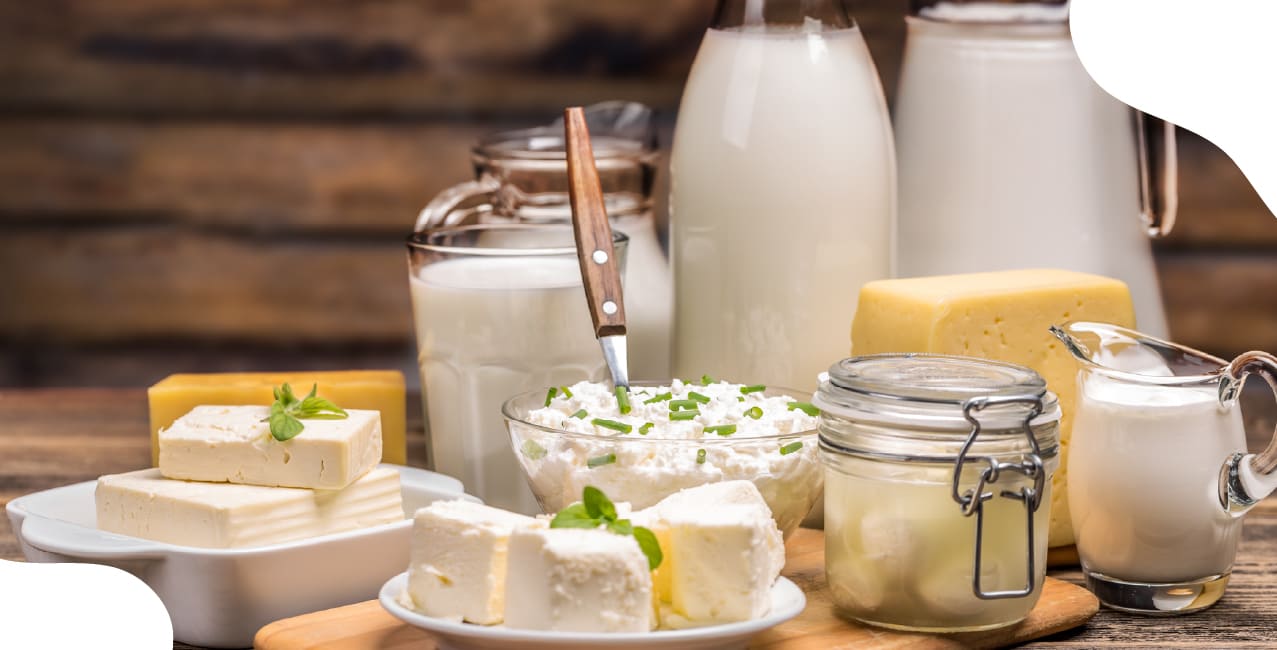
Author
LoansJagat Team
Read Time
5 Min
25 Sep 2025
GST on Dairy Products – Updated Tax Rates & Guide
Key Takeaways
- GST lowers prices and makes milk and dairy products more affordable.
- The government applies different GST rates to different dairy items.
- Businesses can avoid penalties by using the correct HSN codes and GST rates, thereby following the rules.
GST on dairy products is a tax applied to milk, milk-based items, and other related dairy goods. It ensures uniform taxation and helps manage the cost of essential dairy items for consumers.
For example, Meera runs a small dairy shop selling paneer, UHT milk, and curd. Earlier, she was unsure about the tax applicable on each product. With GST on dairy products clarified, she now charges 5% on UHT milk and paneer, 12% on condensed milk, and nothing on fresh milk and unpackaged curd. This not only makes her accounting easier but also ensures she follows the law correctly.
In this blog, we will explore the different GST rates on dairy products, their HSN codes, and how the latest tax rationalisation benefits both consumers and producers. It helps you understand GST on dairy products simply and practically.
GST on dairy products of different categories
The GST Council has recently rationalised GST on dairy products to reduce the burden on consumers. The reforms, effective from September 22, simplify the GST system and make essential dairy items more affordable.
The table below shows the revised GST on dairy products, highlighting the changes in tax rates for different categories to make them more affordable for consumers.
These changes in GST on dairy products will make essential items more affordable for consumers while supporting farmers and boosting the dairy industry.
Read More – GST 2.0 & Mother Dairy: What Consumers Must Know About the Price Cuts
HSN Codes for Dairy Products
The table below lists various dairy products along with their HSN codes. Understanding the HSN codes helps in correctly applying GST on dairy products, ensuring compliance and easier accounting for businesses.
Correct classification using HSN codes ensures that GST on dairy products is applied accurately, avoiding errors and penalties. These rates help businesses manage taxes efficiently while making essential dairy products more affordable for consumers.
Understanding these codes and GST rates also supports transparency in accounting and smooth operation in the dairy sector.
Bonus Tip: If you run a dairy business, keep your invoices properly classified between taxable and exempt items (like fresh milk vs flavoured milk or cheese).
Learn More - Types Of GST Returns: GSTR-1, GSTR-3B, GSTR-4 & More Explained
GST Exemptions on Dairy Products You Should Know
Not all dairy products are taxed under GST. Some items are fully exempt to keep daily essentials affordable for consumers. Fresh milk, unpackaged curd, butter milk, and paneer sold without branding or packaging do not attract any GST. These exemptions make sure that common households continue to access basic dairy products at reasonable prices while only value-added or packaged items fall under GST.
Conclusion
The revised GST on dairy products makes essential items more affordable for consumers while ensuring businesses comply with tax regulations. Proper use of HSN codes and correct GST rates helps avoid errors and supports transparency in accounting, benefiting both producers and buyers.
FAQ’s
What is GST on dairy products?
GST on dairy products is a tax on the sale and supply of milk and other dairy items. It creates a single, fair tax system across India.
Who pays GST on dairy products?
Manufacturers, distributors, and retailers must charge GST on dairy items. Small producers also need to register if their turnover crosses the set limit.
How is GST on dairy products worked out?
GST is charged on the value of the product. For instance, UHT milk has 5% GST, while condensed milk is taxed at 12%. Correct HSN codes ensure the right rate is applied.
Do all dairy products have the same GST rate?
No. Rates differ by product type. Fresh milk and unpackaged curd are tax-free, UHT milk and paneer are 5%, condensed milk is 12%, and dairy machinery attracts 18%.
Can input tax credit be claimed on GST on dairy products?
Yes. Businesses can claim input tax credit for GST paid on raw milk, machinery, or other inputs. This reduces the overall GST on dairy products and helps manage costs efficiently.
About the Author

LoansJagat Team
‘Simplify Finance for Everyone.’ This is the common goal of our team, as we try to explain any topic with relatable examples. From personal to business finance, managing EMIs to becoming debt-free, we do extensive research on each and every parameter, so you don’t have to. Scroll up and have a look at what 15+ years of experience in the BFSI sector looks like.

Quick Apply Loan
Subscribe Now


